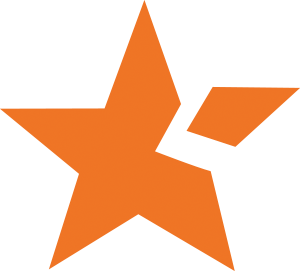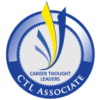LinkedIn Profile Components

The following post explores all the LinkedIn profile components that make up your profile.
Understanding the basic fundamentals is key when building an impressive LinkedIn profile. Each component of your profile, from the headline to the skills section, contributes to your presentation.
Read: Benefits of Joining LinkedIn Groups
Related: LinkedIn Profile Optimization Tips
Building and maintaining your LinkedIn profile requires understanding the various components. This post explores all the different pieces that comprise your profile.
LinkedIn Profile Components
About: The summary within the about section of your LinkedIn profile is a 2,000-character limit opportunity to communicate your skills and experience with context on your personal mission and values. The media section allows you to add or link to external documents, pictures, websites, videos, and presentations.
Account Settings: Customize your LinkedIn experience by managing your settings. Learn how to change your contact information, including email addresses and phone numbers, and language settings.
Courses and Learning Certificates: You may add courses to add depth to your educational history and keywords to help your LinkedIn profile be found including course name, number, and role associated.
Education: You may add, change, or remove education entries including school name, degree type, field of study, grades, activities and societies, dates attended, and media.
Experience: This section is for adding work history details to your profile. The experience section is comprised of several fields including job title, employment type, company, location, dates, description, and media.
Geographic Location: You may display your geographic region or the specific city you live in. LinkedIn profile components for location are divided into geographic regions. You may list either a region or a specific city.
Groups: Joining groups is a great way to connect with like-minded people, stay informed on relevant topics, and participate in thought-provoking conversations. Here is an article we wrote highlighting the Benefits of Joining LinkedIn Groups.
Headline: Your headline is the text below your name. This displays in search results and may be separate from the title of your current role. 120 characters is the limit for this section of your profile.
Honors & Awards: Adding honors and awards highlights specific achievements and adds depth and substance to your profile including honor/award title, role associated, issuer, and date.
Introduction Card: The introduction card is the first thing seen when arriving on your profile. This section is used to communicate your personal and professional status at a glance.
Languages: Adding languages to your LinkedIn profile is great for highlighting your ability to work with global teams. This includes listing proficiency (beginner), limited working, professional working, full, or native.
Licenses & Certifications: You may add certifications to showcase your knowledge and professional achievements on your LinkedIn profile including certification name, issuing organization, issue date/expiration date, credential ID, and credential URL.
Open to Work: If you’re looking for a job, you can let recruiters know you’re open to new opportunities. You may select your top-5 desired job titles and geographic locations as well as job types you’re willing to accept (F/T, P/T, contact, intern, volunteer, temp, remote).
Organizations: Adding organizations is one of the most popular LinkedIn profile components for highlighting your professional affiliations including organization name, role, cause, and time period.
Patents: You may add patents to highlight your thought leadership in a particular field on your LinkedIn profile. Fields to include are patent title, patent office (country), patent/application number, inventor name(s), patent status, issue/filing date, and patent URL.
Photo (Background): Your background picture shows behind your profile photo in the introduction card on your profile. This photo is a great opportunity to personalize your profile and give it a flavor of your own. Ideas include city skyline, nature, or mosaic images.
Photo (Profile): Including a profile photo increases the credibility of your profile by helping you stand out from the crowd, and it allows people to see who you are when you send invitations to connect.
- How to Add / Change Headshot Photo
- Profile Photo Guidelines and Conditions
- Profile Photo Visibility Settings
Profile URL: By default, LinkedIn assigns you a URL with random numbers and letters. For branding purposes, you will want to customize the link. An easy-to-read website address increases the chance of people being able to remember and find you on LinkedIn.
Profile Visibility: You may control the visibility and reach of your LinkedIn profile by customizing the privacy settings within the security and privacy settings in your account.
Projects: Adding individual or team projects to your profile is great for highlighting current or previous work experience, education or training, or personal projects by listing title, dates, role associated, and project URL.
Publications: You may add, edit, or remove publications on your profile including publication title, publication/publisher, publication date, author(s), and publication URL.
Recommendations: This section is for written statements to recognize or commend a connection. This includes co-workers, business connections, and classmates. These recommendations enable those visiting your profile to see what others have to say about you.
Skills & Endorsements: Skills is one of the top sources of keywords used in searches and plays a critical role in terms of incorporating important keywords into your profile. A maximum of 50 skills are allowed per profile.
Volunteer Experience: Adding volunteer experience to your LinkedIn profile is a great way to highlight your extracurricular personal activities over the years. You may list both active and past volunteer experience including organization name, role, time period, and cause.
In Conclusion
I hope this article helps you better understand all the different components to your LinkedIn profile. With this knowledge, you’re better positioned to differentiate yourself and make your profile stand out.








